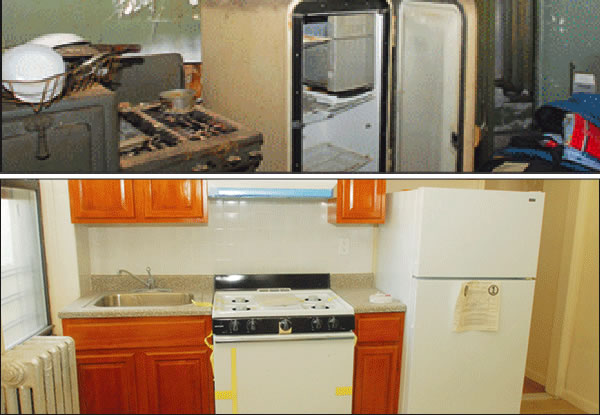By Josh Rogers
Victor snapped pictures on Hester St. last week outside his family’s next home. He enjoyed the political speeches and didn’t seem to be in a particular hurry to see his new and more affordable two-bedroom apartment for the first time.
He had found out two days before that he had won an apartment lottery and that he, his wife, and their two preschoolers would soon be moving from Bay Ridge to a cheaper place in Chinatown. He recalled the news brought a “Kool Aid smile” to his face.
“And I found out today,” said his wife, Lucy, 23, sounding slightly annoyed at the Thursday ceremony. “He surprised me.”
Asian Americans for Equality, a non-profit group, had bought the building last year with the help of a $16 million grant for affordable housing from the Lower Manhattan Development Corp., a federally funded authority created after 9/11. AAFE has acquired four buildings in Chinatown and the Lower East so far under the program, preserving 90 affordable apartments that otherwise could have been converted to luxury units.
Victor, 26, said not only will his rent drop from $1,400 in Bay Ridge to $1,180 at Hester St. when he moves in this weekend, but he will be able to walk to his job at Gouverneur Hospital as a graphic designer, saving $81 on a monthly MetroCard.
He said he’ll spend the bulk of the extra money making a dent in his ballooning debt.
“I’m still paying back student loans — those interest rates are killers,” he said. He said he now owes $60,000 for two years of college at Long Island University. “Imagine how much it would be if I went for four years.”
Most of their new neighbors have been living in the Hester St. walkup for a long time and are getting overdue repairs. But not nearly as many repairs as at 30 Henry St., another new AAFE building, where some residents lived in shocking levels of squalor and others were crammed into small spaces.
Councilmember Alan Gerson, who attended last week’s ceremony, recalled his grandparents’ accounts of tight quarters in L.E.S. tenement buildings. “Now those cubby holes are so much older and so much more dangerous,” he said.
On a tour of 30 Henry St. a few weeks ago, Chris Kui, executive director of AAFE, showed apartments that had been illegally sectioned off, forcing families to be jammed into small rooms. In the worst apartment, a Korean War veteran had been wallowing in filth and disrepair for decades. The refrigerator, once powered by gas, had not been working for many years.
AAFE convinced the veteran to take another apartment and plans to renovate the old one.
Kui said many of the man’s friends had no idea about his apartment’s condition. “If you see him on the street, he’s very polished,” he said. “You would never know he’s living in this condition.”
He said on average, it will cost about $250,000 to $300,000 to buy and repair the 90 apartments under the program, and almost half of that comes from government support. Otherwise, residents would be priced out of the neighborhood, Kui said
“The prices being asked here are not sustainable by the existing rents,” Kui said.
Shaun Donovan, commissioner of the city’s Dept. of Housing Preservation and Development, which is administering the AAFE program, said it took three years to start because the building prices rose so fast that H.P.D. had to find “creative” ways to finance the project.
At the ceremony, Gerson challenged Donovan to expand the program citywide and save more affordable apartments, prompting Donovan to say “no good deed goes unpunished.”
He did say H.P.D. and AAFE were close to closing on a building in June and would likely ask the Council for more money to build on the program.
“We want to make sure …that this revitalization of Lower Manhattan is not something that happens to the residents of Chinatown but for the residents of Chinatown,” Donovan said.
The tenements which once housed predominantly Jewish and Italian immigrants now are now home to many Chinese-Americans. Borough President Scott Stringer, who contributed $1 million out of his budget to the program said, “Hester St., Ludlow St. Orchard St. — this is the real Lower East Side.” Left unsaid was the fact that the store signs on the block are mostly Chinese now and some people consider the area part of greater Chinatown.
Avi Schick, chairperson of the L.M.D.C., was pleased to be talking about a 9/11 redevelopment project that was mostly complete. There had been lots of ideas, Schick said, but “this is actually real — going from an idea to a proposal to a grant to a building that people are going to move into.”

























